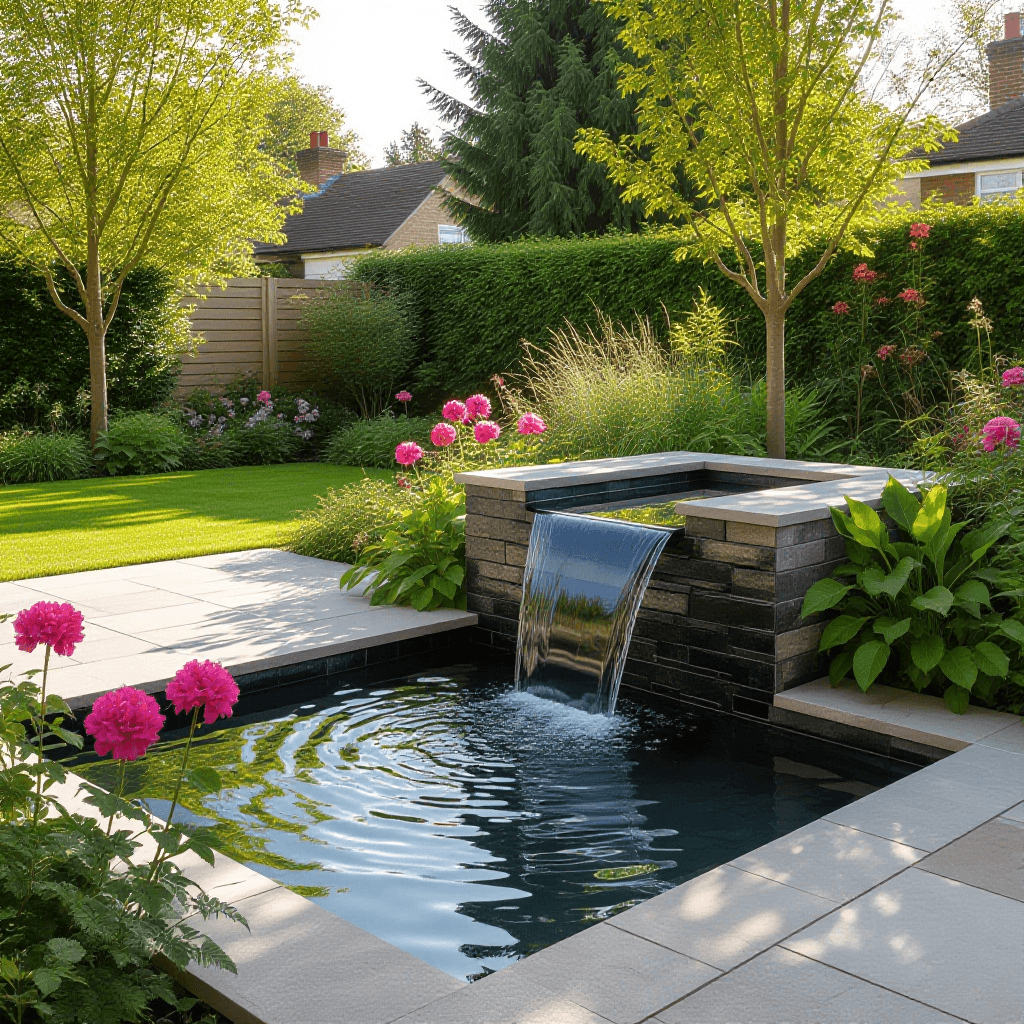Choosing the Right Materials for Your Patio Garden
Creating a patio garden in the UK requires careful consideration of materials, as they significantly influence the garden’s aesthetics, durability, and maintenance. Various options exist, including paving stones, decking, gravel, and concrete, each providing unique benefits and drawbacks suited for the temperate UK climate.
Paving stones are a popular choice due to their versatility and durability. Available in various styles, such as natural stone, brick, or concrete, they can enhance the beauty of your outdoor space. Made from resilient materials, paving stones can withstand the UK’s often unpredictable weather while providing an attractive finish. However, they may require regular cleaning to prevent moss growth, particularly in shaded areas.
Decking offers a warm and inviting look for patio gardens. Wooden decking can create a natural, rustic appeal, ideal for a relaxed outdoor setting. However, it necessitates regular maintenance, including staining and sealing, to protect against moisture and wood rot. Composite decking, made from recycled materials, is a more sustainable alternative that offers increased durability and lower maintenance needs, making it a suitable choice for the environmentally conscious gardener.
Gravel presents a cost-effective and easy-to-install option, providing good drainage and preventing waterlogged areas typical in many UK gardens. Available in numerous sizes and colors, gravel can add texture to your patio aesthetics. However, it may require occasional replenishing and weeding to maintain its appearance.
Concrete is another robust choice, known for its longevity and low maintenance requirements. It can be customized with various finishes, such as stamped patterns or colored sealants, contributing to its visual appeal. While concrete is highly durable, its rigid nature might not provide the same inviting atmosphere as softer materials like wood or stone.
Incorporating sustainable materials, such as recycled stones or reclaimed wood, also provides an eco-friendly edge to your patio garden, promoting responsible gardening practices. Each material presents unique characteristics that should be carefully assessed against specific garden requirements to ensure a successful patio garden design.
Designing Your Patio Garden: Layout and Style Considerations
Designing a patio garden involves careful consideration of layout and style to ensure the space is not only aesthetically pleasing but also functional. When approaching your design, it is crucial to choose a theme that resonates with your personal taste while complementing the architecture of your home. Popular styles include contemporary, traditional, and cottage, each offering distinct characteristics that can influence your overall design.
A contemporary patio garden is defined by clean lines, minimalistic furniture, and a focus on natural materials. Incorporating geometric shapes in the layout can enhance visual appeal and create an uncluttered environment. Conversely, a traditional patio garden emphasizes classic elements such as ornate furniture, intricate pathways, and vibrant seasonal flowers. This style fosters a timeless atmosphere that is both inviting and charming. Alternatively, the cottage style brings a sense of whimsy and relaxation. This design often features rustic furniture, mixed plantings, and an abundance of ornamental elements that mimic a natural, unstructured setting.
When determining the layout of your patio garden, factors such as size and space utilization are paramount. It is essential to assess the square footage available and how best to allocate it for various activities. Creating defined zones for dining, relaxation and recreation can greatly enhance usability. For instance, a cozy seating area can encourage gatherings, while strategically placed plants can create privacy and delineate different spaces. Incorporate pathways that facilitate easy movement throughout the space without disrupting the overall aesthetic. Consideration of visibility and access is key, ensuring that each area feels welcoming and cohesive within the larger design.
Ultimately, the goal is to design a patio garden that reflects your lifestyle, making it a sanctuary where you can unwind and enjoy nature’s beauty. The combination of thoughtful styling and practical layout will result in an inviting patio garden that meets both your functional needs and stylistic preferences.
Installation Tips: From Planning to Execution
Installing a patio garden can be a rewarding project that transforms your outdoor space into a beautiful retreat. The process begins with careful planning, ensuring that the design aligns with your vision while considering practical aspects. Start by measuring the area intended for the patio garden. Accurate measurements will help you determine the size and layout that best fits your space. Make sure to mark out the design either on paper or using stakes and string in your garden to visualize the final look.
Depending on local regulations, you may need to obtain permits before starting your installation. It is advisable to check with your local council to understand any requirements that might apply. Once you are clear on the design and legal considerations, proceed to prepare the ground. Clearing the area of debris, grass or weeds is essential in providing a clean slate for your garden. Depending on the type of materials you plan to use, you may need to excavate the soil to achieve the desired depth.
When laying materials such as pavers, stones, or decking, ensure they are level and stable. It is crucial to incorporate proper drainage solutions to prevent waterlogging, which can damage plants and encourage mold growth. This often involves creating a slight slope away from structures and using aggregate materials for permeable surfaces. Use appropriate tools like a shovel, a level, and a rubber mallet for the installation. Additionally, consider safety measures such as wearing gloves and protective eyewear to guard against injury during the installation process.
As you progress through these stages, remember to step back and assess your work periodically to ensure it aligns with your initial vision. This check will help you maintain an organized approach while achieving a functional and aesthetically pleasing patio garden.
Maintaining Your Patio Garden for Long-term Enjoyment
Maintaining a patio garden is essential for ensuring its sustained beauty and health, particularly in the unique climate of the UK. Regular upkeep not only enhances the aesthetic, but also fosters a thriving ecosystem that can withstand changing seasons. Routine tasks should include cleaning surfaces to prevent the accumulation of dirt and algae, which can detract from the overall appeal and safety of the area. Pressure washing or using a solution of mild soap and water can effectively remove these unwanted residues, ensuring that the hardscaping remains in pristine condition.
Caring for the plants in your patio garden is equally important. Selecting resilient plant species that are well-suited to the UK climate is a smart move, as they require less maintenance and are more likely to thrive. Incorporating a mix of perennial and annual plants can offer continual blooms and greenery throughout the seasons. Regular watering, pruning, and deadheading are key practices to maintain their health. Conducting a soil check periodically will help ensure that nutrient levels are adequate, which is vital for plant longevity.
Pest control should also be a priority in the maintenance routine. Being proactive by inspecting plants for signs of pests and diseases allows for timely intervention. Utilizing organic pest control methods, such as introducing beneficial insects or applying natural repellents, can keep your garden healthy without harmful chemicals. Additionally, mulching can assist in retaining soil moisture and preventing weeds, which can compete with your plants for nutrients.
Seasonal maintenance tasks, such as preparing for autumn by cutting back overgrown plants and protecting delicate species from frost, will also support a thriving garden. By following these maintenance guidelines, you will not only enjoy the aesthetic benefits of your patio garden but also foster a sustainable environment that provides pleasure for many years to come.


